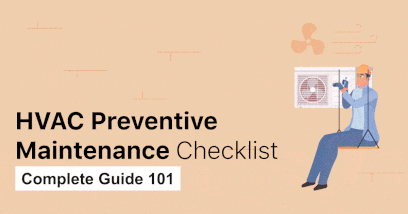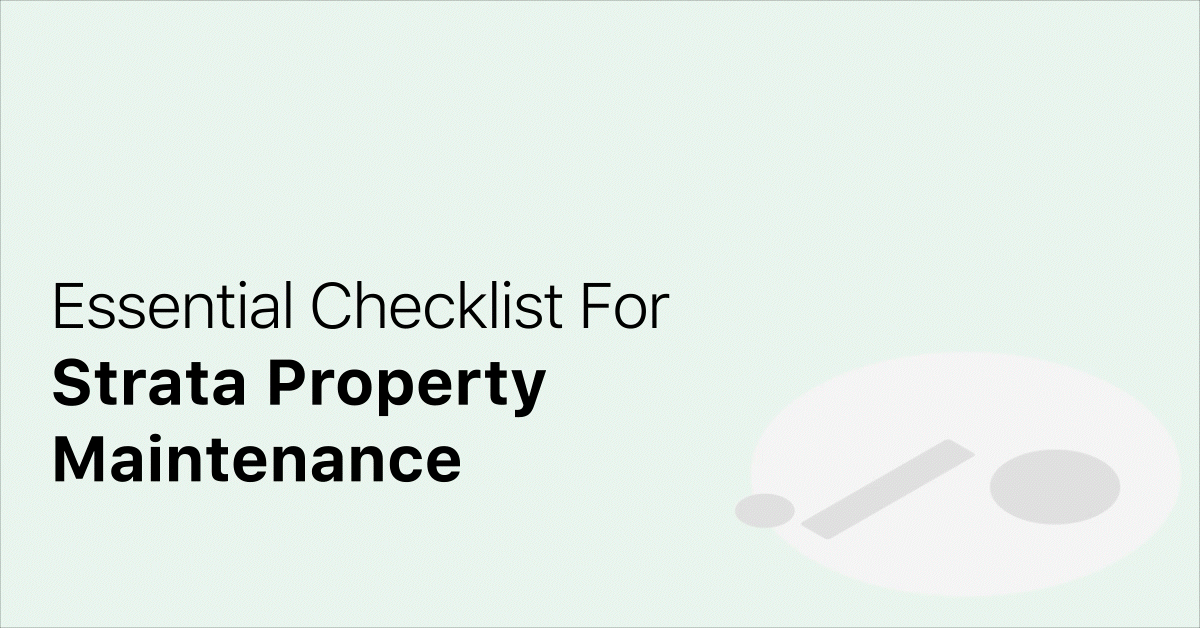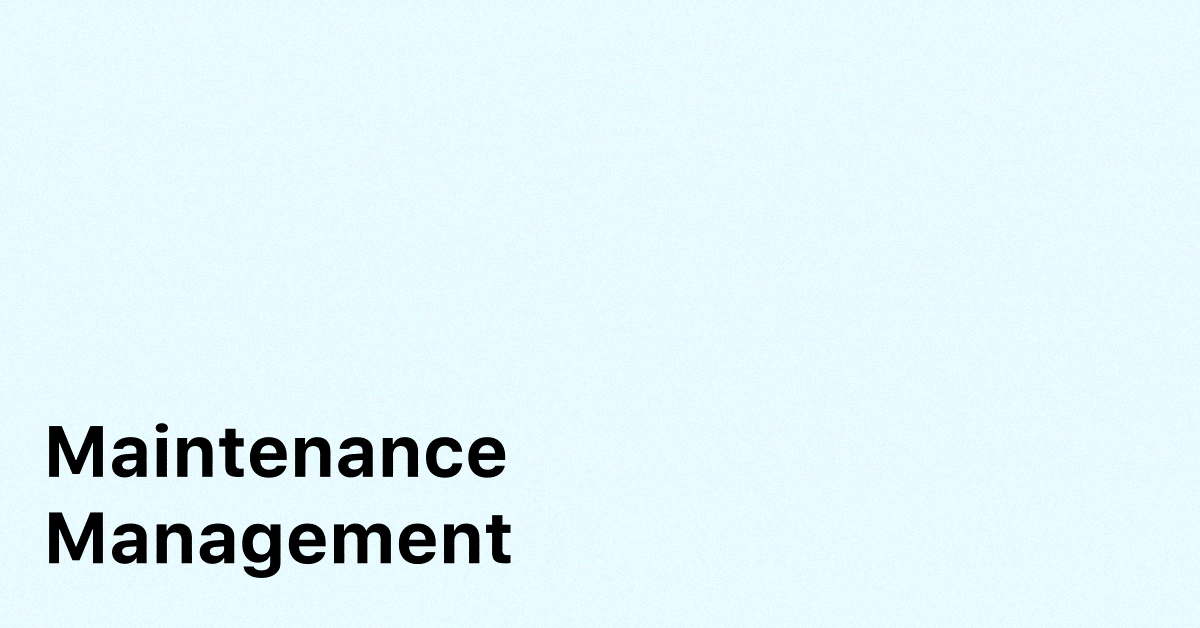Heating, Ventilation and Air Conditioning (HVAC) is a vital component of all buildings and it requires regular maintenance like all other appliances or systems installed. If maintenance is not carried out properly, your system could lose 5% of its efficiency every year!
Most HVAC service providers suggest getting your system inspected and tuned twice a year. Once before the fall when you turn the heating on and once in the spring before you turn the cooling on.
Let’s take a look at why regular preventive maintenance of your HVAC system is so important, what factors do you need to consider and what tasks need to be carried out. Finally, we’ll look at a maintenance guide to help you through the entire HVAC preventive maintenance process.
Why is HVAC Preventive Maintenance Important?
Lower energy costs
When your HVAC system is in a good condition it runs more efficiently and requires less energy to operate. This in turn slashes down your energy bills. When your HVAC system is not serviced regularly, it needs to work overtime to produce the same amount of heating and cooling. To do so, it pulls in more energy and hence costs you more.
Reduced repair costs
Fewer Emergency Repairs
Sustainability
Higher life span of your system
Health and safety
Mould and dust regularly cleaned off your HVAC system ensures better air quality for the occupants. This is especially helpful for those who might have allergies or breathing illnesses such as asthma.
It also makes your system safer to run on the premises. As with all electrical equipment, short circuits are common. Fixing them on time can avoid potential fires.
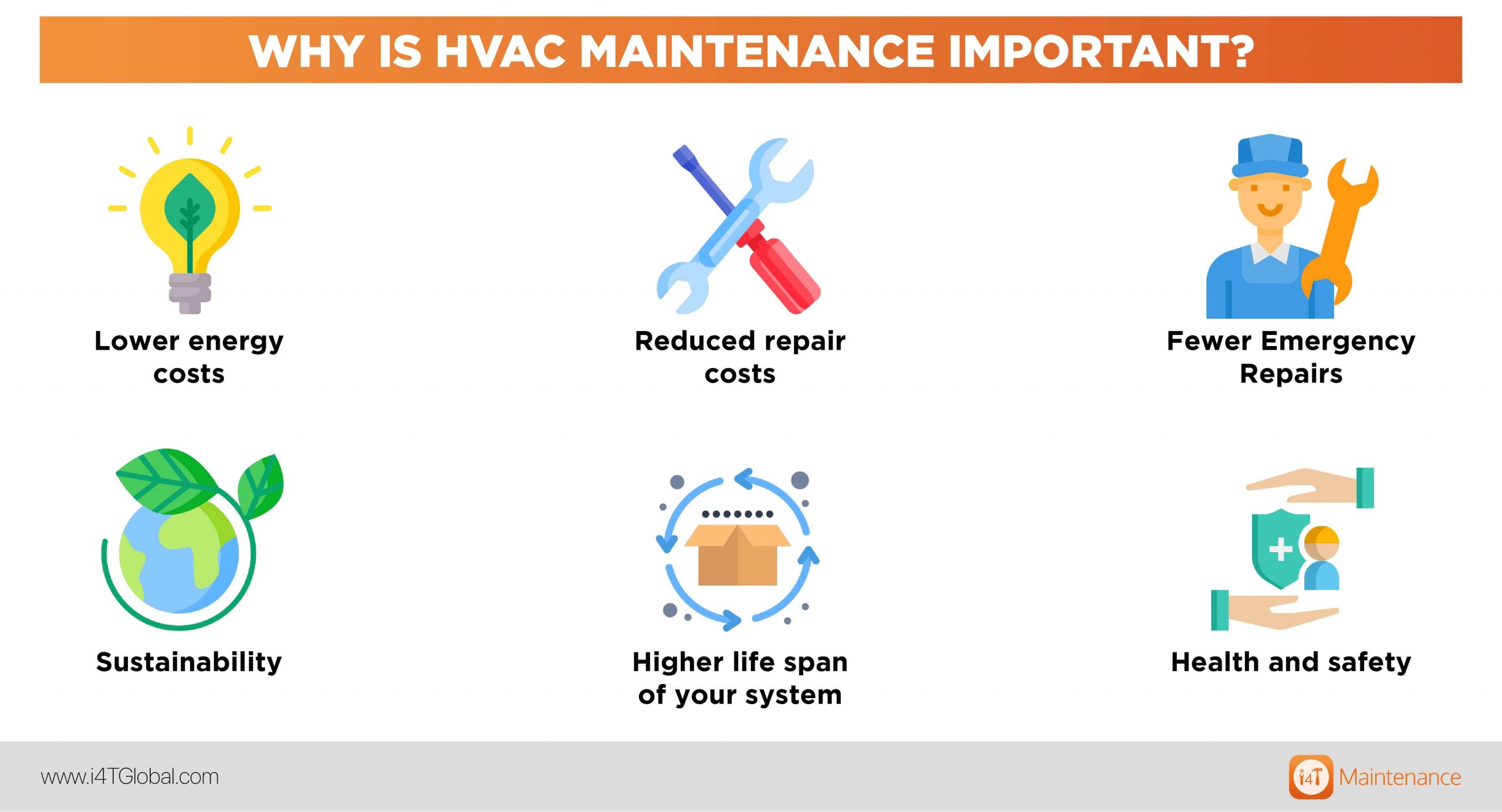
Spring and Summer Maintenance Tasks
Spring is a great time to take a closer look at your air conditioning system, before you put it to full-time work as the season turns in the coming weeks.
Here is a checklist for you to follow when carrying out spring/summer preventive maintenance for your HVAC:
- Clean or replace filters as needed.
- Check the condenser and make sure the evaporator coil is free of dirt.
- Inspect for possible blockage in the drain lines to allow free flow.
- Replace worn out parts such as belts.
- Check for mould build up.
- Check thermostat controls, humidity levels and timer.
- Inspect moving parts such as fan motor, pulleys, bearings etc and lubricate where necessary.
- Replace batteries and check all electrical connections.
- Check the cabinet for possible leaks and see if its door is closing securely.
- Clean the outer unit.
Fall and Winter Maintenance Tasks
Just like spring/summer HVAC preventive maintenance is vital for keeping your property cool, fall/winter preventive maintenance helps keep the furnace running.
Here is a checklist for you to follow when carrying out fall/winter Preventive Maintenance for your HVAC:
- Replace the heating equipment filters. Ideally, this should be done every 3 months.
- Make sure the ignition burner assembly and other heating elements and heat exchanger are working flawlessly.
- Check for gas pressure and possible leakage from any of the components.
- Examine all moving parts and lubricate as needed.
- Make sure the drain line is clear of any foreign particles and the pan doesn’t have any standing water that might overflow.
- Inspect the heat pump.
- Check the thermostat and other controls.
- Check the wiring of all electrical connections.
- Examine the flue system for possible issues.
- Check fan, blower, ducts and vents.
HVAC Maintenance Guide
Plan ahead
A Preventive Maintenance schedule is the key to keep your HVAC system running smoothly round the year. Scheduling planned maintenance and following through minor fixes ensures that you are always ahead of your maintenance work. To plan ahead you need to carry out regular inspections as per the seasonal checklist.
Planning ahead is not restricted to the kind of maintenance that needs to be carried out but also laying out the budget for it, who will do it and when. This ensures all resources are available when needed.
Hire a Professional
Be vigilant
While a professional will help you fix the problem or carry out HVAC Preventive Maintenance, as a property owner/occupant or facility manager you must be vigil about things that can go wrong.
Consider the below as some important rules to follow when taking care of your HVAC system.
Filter maintenance
Replace filters every 3 months at least. While this may sound like a big expense, it will save you lots more in reduced energy bills. It will also save your system from working harder than it needs to.
Checking refrigerant lines monthly
Refrigerant lines are the ones that lead from the HVAC system to your home. These are prone to leakages due to outside factors. Keeping a close eye on these lines ensures that occupants enjoy the desired temperature all the time.
Turn off water supplied to furnace humidifier
Humidifiers are not used in the summertime, so the water supplied to them should be turned off. They then need to be turned on before the start of winter after replacing the filter. Once you have set the desired humidity level, only then the water supplied should be turned on again.
Keep checking carbon monoxide detector
Carbon Monoxide is a silent killer. Make sure they are in good working order. Their batteries should be replaced every 6 months to ensure they are working properly and the occupants are safe from carbon monoxide poisoning.
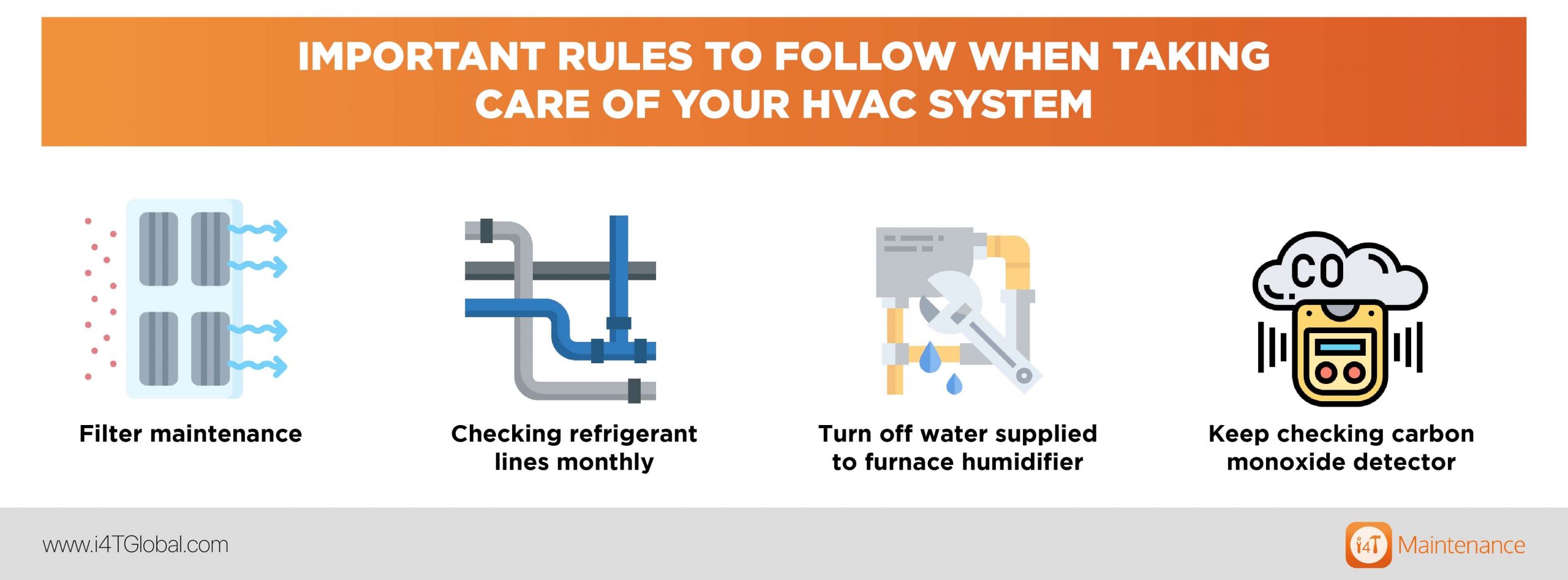
Factors to consider when making an HVAC maintenance plan
An HVAC preventive maintenance plan is the yearly or bi-yearly plan to clean, inspect and otherwise maintain your HVAC system. While different HVAC suppliers offer different maintenance plans, as a facility manager you need to set your own goals in terms of cost, resources and prioritisation.
Here are some of the factors that you should be looking at:
Frequency of maintenance
Budget allocation
Resource Requirement
Prioritisation
CMMS integration
Once you have a thorough understanding of what needs to be done, at what interval and priority level and who needs to do it, you can schedule everything in a CMMS.
A good Computerised Maintenance Management System (CMMS) helps you build a complete HVAC Preventive Maintenance program. It will include history of inspections, work orders completed, repairs and replacements, technician details and costs incurred.
The more information you are able to record and maintain the better you are able to make decisions that can help your company’s bottomline.
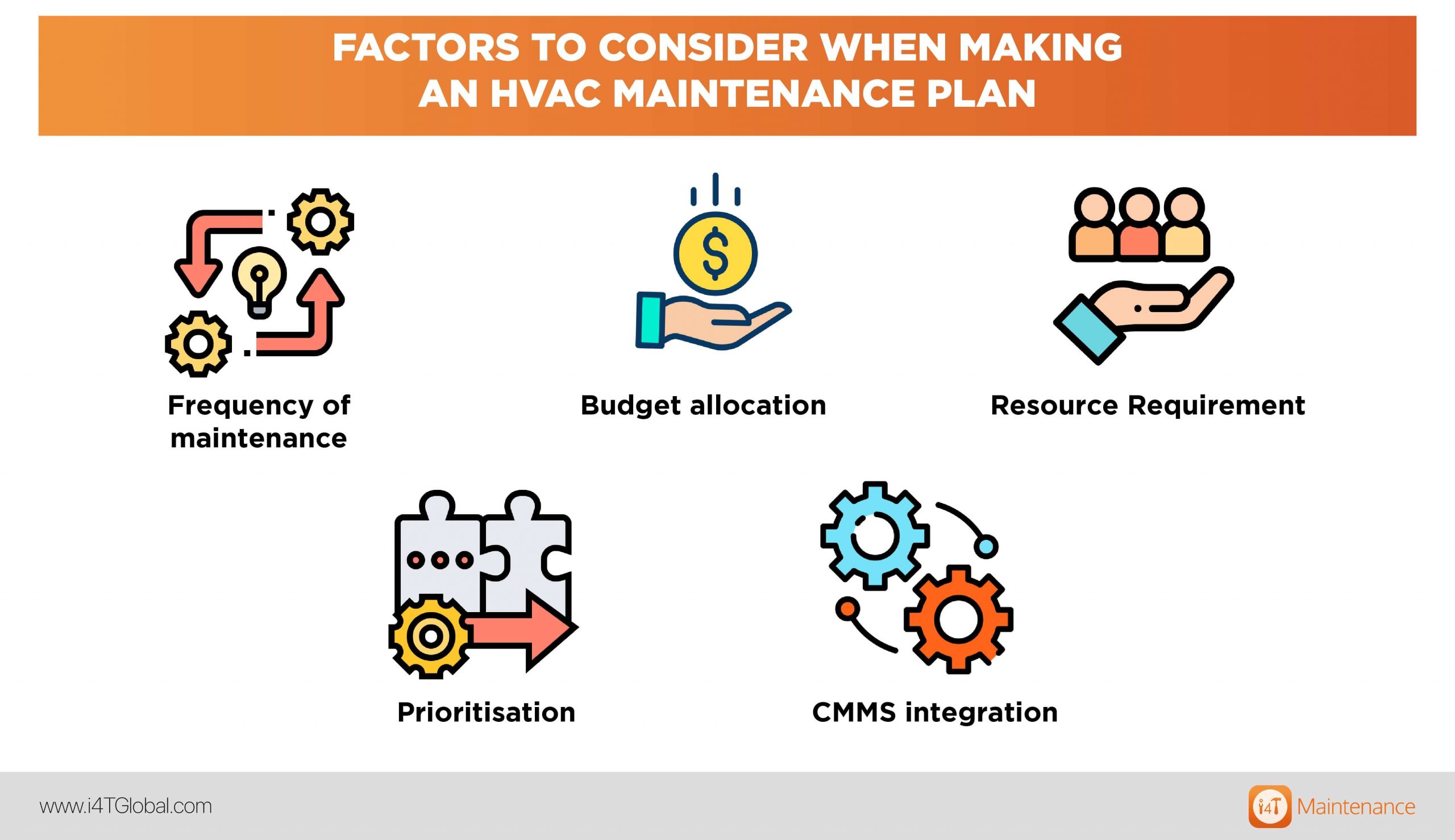
How to decide which maintenance plan is best for you
Fast Service
If you are doing regular HVAC Preventive Maintenance, you can rest assured that there will be no emergency repair calls from property occupants. Still, you need to make sure that the service provider you choose attends to your properties as per the scheduled maintenance plan. To do so, look for providers that have more staff and an extensive fleet so they are available when you need them.
Quality Work
Low Cost
Product Protection
Comprehensiveness
Flexible plan options

Wrapping up
Preventive Maintenance helps you save more with a significantly less investment than what you may incur in case of breakdown.
i4T Maintenance offers state-of-the-art CMMS solutions that can help you build and manage a comprehensive HVAC maintenance management program. Now you can stay on top of your maintenance work and empower your teams with more insights for better decision making.
Hot off the press!

With our cutting-edge technology and in-depth knowledge of how the Field Service Management sector operates, the i4TGlobal Team loves to share industry insights to help streamline your business processes and generate new leads. We are driven by innovation and are passionate about delivering solutions that are transparent, compliant, efficient and safe for all stakeholders and across all touch points.

